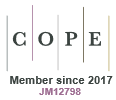Just Accepted
This article has been peer reviewed and accepted for publication. It is in production and has not been edited, so may differ from the final published form.
Molecular phylogeny provides new insights into the classification of the order Spirostreptida (Arthropoda: Diplopoda), with description of Pericambala foveiformis, sp. nov. (Cambalidea: Pericambalidae) using integrated evidence
Abstract
The millipede order Spirostreptida (Arthropoda: Diplopoda) displays extremely high species diversity. However, the current classification of Spirostreptida is controversial, and the systematic status and phylogenetic relationships of some of its included superfamilies/families and genera remain uncertain due to the paucity and inaccessibility of suitable material or genetic data for key taxa. In the present study, a new pericambalid species, Pericambala foveiformis, sp. nov. (Cambalidea), is described using integrated methods. Moreover, the complete mitochondrial genomes of this new species and Agaricogonopus acrotrifoliolatus Zhang & Zhang, 1997, are sequenced and annotated. The mitogenome of P. foveiformis, sp. nov. is the first for the suborder Cambalidea, while that of A. acrotrifoliolatus is the first for the family Harpagophoridae. The mitogenome of P. foveiformis, sp. nov. with 17,467 bp in length, is the largest diplopod mitogenome currently known. Phylogenetic results based on the 16S rRNA + cox1 data and the concatenated amino acid sequences of 13 PCGs of mitogenomes, both support the division of the order Spirostreptida into two suborders, Cambalidea and Spirostreptidea, but do not support the division of the suborder Spirostreptidea into two superfamilies Odontopygoidea and Spirostrptoidea, because of the two odontopygoid genera Chaleponcus and Prionopetalum nested within Spirostreptoidea. The phylogenetic analyses of 16S rRNA + cox1 data also show that Harpagophoridae and Pericambalidae are each monophyletic. However, the phylogenetic relationships among the three families Harpagophoridae, Odontopygidae and Spirostreptidae within Spirostreptidea remain unresolved.
IS25023 Accepted 18 July 2025
© CSIRO 2025



